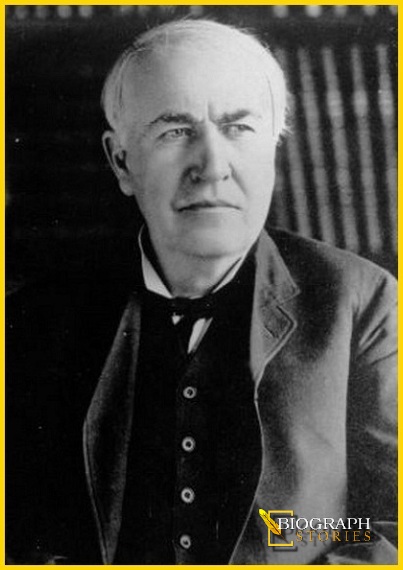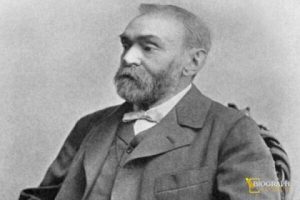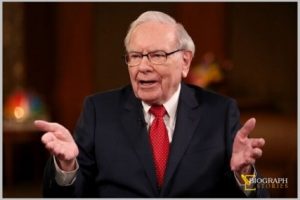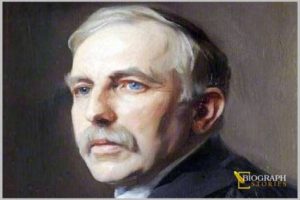
Thomas Edison Quick Facts:
Born: February 11, 1847, Milan, Ohio, United States
Died: October 18, 1931, West Orange, New Jersey, United States
Education: The Cooper Union (1875–1879)
Children: Charles Edison, Theodore Miller Edison, MORE
Spouse: Mina Miller (m. 1886–1931), Mary Stilwell (m. 1871–1884)
Awards: Technical Grammy Award, MORE
Thomas Edison Biography
Thomas Edison was an American inventor who is considered to be one of America’s leading businessmen and innovators and credited with inventions like the first practical incandescent light bulb and the phonograph. In his entire life, he held over 1,000 patents for his inventions. He is one of those reason on which the present world of science is still grateful today for helping to build America’s economy during the Industrial Revolution.
Early Life and Education
Thomas Edison was born on February 11 in the year 1847. His birth place was located in Milan, Ohio. His parents had seven children among them he was the youngest. The name of his father was Samuel and his mother was Nancy Edison. His father was a colonial political activist from Canada, while his mother was an accomplished school teacher.
In his early hood, he had ear infections that caused him hearing difficulties in both ears as a child and nearly deaf as an adult.
In 1854, his family moved to Port Huron in Michigan. There he attended public school for a total of 12 weeks. For his restless behavior, he was considered “difficult” by his teacher.
By knowing this, his mother quickly started to teach him at home. At age of 11, he showed a hungry appetite for knowledge, reading books on a wide range of subjects.
At age 12, Edison started to sell newspapers to passengers along the Grand Trunk Railroad line. There soon after learning the basic of newspaper, he began publishing his own small newspaper, called the Grand Trunk Herald where the up-to-date articles were a hit with passengers.
Edison the Telegrapher
While Edison worked for the railroad, once he saved a three-year-old from being run over by an errant train. As a reward of this heroic incident, the child’s father recognized him with his hunger of knowledge and courage and rewarded him by teaching him to operate a telegraph. By the age of 15, he had learned enough to operate a telegraph.
For the next five years, Edison traveled throughout the Midwest as an itinerant telegrapher. In his spare time, he read widely, studied and experimented with telegraph technology, and became familiar with electrical science.
Children
In 1871 Edison married a 16-years old girl named Mary Stil well who was an employee at one of his businesses. The marriage lasted for 13 years and they had three children together. In 1884, Mary died at the age of 29 because of brain tumor. After two years of her departure, Edison married Mina Miller who was 19 years junior of him.
Inventions
In the year 1869 when he was 22 years old, Edison moved to New York City and developed his first invention. He designed an improved stock ticker called the Universal Stock Printer that could synchronize several stock tickers’ transactions.
By the early 1870s, he had acquired a reputation as a first-rate inventor. At that very year, he set up his first small laboratory and manufacturing facility in Newark, New Jersey. From that time he had a business mind along with his creative inventing gifts and thus he used to form numerous partnerships and developed products for the highest bidder to make profit out of it.
Quadruplex Telegraph: Edison designed for Western Union the quadruplex telegraph that was capable of transmitting two signals in two different directions using the same wire.
Phonograph: In December of 1877, Edison developed a method for recording sound for the first time with his invention called phonograph which had tin-coated cylinders with two needles, one for recording sound and another for playback. His first words spoken into the phonograph’s mouthpiece were, “Mary had a little lamb.”
Light Bulb: After buying Woodward and Evans’ patent and making improvements in his design, Edison was granted a patent for his own improved light bulb in 1879.
Later Inventions & Business
In the year 1887, Edison built an industrial research laboratory in West Orange, New Jersey to serve as the primary research laboratory for the Edison lighting companies. He spent most of his time there by supervising the development of lighting technology and power systems along with the mechanics working there. He also perfected the phonograph, and developed the motion picture camera and the alkaline storage battery.
Motion Picture
On April 23 in the year 1896, Edison introduced himself as the first person to project a motion picture by holding the world’s first motion picture screening in New York City. Soon, Edison’s West Orange laboratory was creating Edison Films. Among the first of these was The Great Train Robbery, released in 1903.
Patents
During his lifetime, Edison was awarded with 1,093 U.S. patents and filed an additional 500 to 600 that were unsuccessful or abandoned. He executed his first patent for his Electrographic Vote-Recorder on October 13, 1868 when he was just 21. His last patent was for an apparatus for holding objects during the electroplating process.
Thomas Edison’s Death
Edison died on October 18, 1931 from complications of diabetes in his home located in Glenmont, West Orange, New Jersey. At the bed of his death, he was 84 years old. Many communities and corporations throughout the world dimmed their lights or briefly turned off their electrical power to commemorate his passing.
Though he was a publicity seeker, he didn’t socialize well and often neglected his family. But by the time he died, Edison was one of the most well-known and respected Americans in the world.








